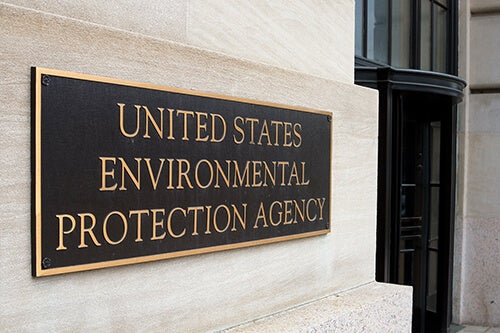On December 6, 2024, the California Office of Environmental Health Hazard Assessment (OEHHA) adopted a proposed rule to align short-form warning labels with long-form warnings under the California Safe Drinking Water and Toxic Enforcement Act (more commonly known as Proposition 65).
This new final rule, which outlines the requirements for the revised Proposition 65 short-form warnings, will affect any company selling products sold or distributed in California. It also introduces new regulatory compliance and legal liability risks.
Let’s break down what this means for you, and your next steps.
What Has Changed? New Proposition 65 Label Requirements
Under Proposition 65, manufacturers must provide clear and reasonable warnings to consumers and workers if their products can cause exposure to chemicals on the OEHHA’s list of carcinogens and reproductive toxicants. The list is updated at least once a year and currently contains over 1,000 chemicals.
Typically, this means warning labels must be applied directly to the products. Manufacturers can choose either a long-form or short-form label. Historically, most have chosen a generic short-form warning label stating “cancer and reproductive harm.” However, this has resulted in “over-use, diluting the impact of legitimate warnings… which does not serve Proposition 65’s purpose of providing relevant hazard information” (from the OEHHA’s Initial Statement of Reasons).
To fix this issue, the new ruling requires all short-form warning labels to name the specific chemical triggering the exposure warning, and the associated cancer and/or reproductive harm. This is similar to the requirement for long-form warnings.
For example, a label might state: “Cancer risk from exposure to [name of chemical]” or “Can expose you to [name of chemical], a carcinogen.”
The new ruling also adds some signal word options for food warnings, and provides tailored safe harbor warnings for passenger or off-highway motor vehicle parts and recreational marine vessel parts.
For nearly all manufacturers using short-form warning labels, this change means they’ll need to replace their labels with more specific ones using verified supply chain data. Before, companies could bypass the need for supply chain due diligence by simply purchasing a generic warning label, but now they will first need to have evidence about which substances are in their products, and whether they are listed by OEHHA.
When Is the Deadline?
The final rule takes effect on January 1, 2025, with a three-year grace period. That means any product manufactured and labeled on or after January 1, 2028, must adhere to the new labeling requirements. Put another way, products manufactured and labeled prior to January 1, 2028, with the old short-form warning can continue to be sold as is.
Keep in mind that sourcing the supply chain data, formatting your new labels, and updating your manufacturing process to use the new labels can take a year or even more. The three-year grace period is there to allow companies to meet the 2028 deadline, and many companies will need to start the switchover in 2025.
What Are the Risks?
If you currently use short-form warning labels, you face a number of risks if you don’t take action to revise them.
Proposition 65 is well-known for bounty-hunter legal enforcement. Watchdog groups and law firms have made millions of dollars by suing companies for improper labeling (or a lack of warnings entirely). The new short-form requirements add multiple extra layers of risk:
- Lawsuits over using an out-of-date label format
- Lawsuits over listing an incorrect chemical/hazard combination
- Lawsuits over listing a chemical name that is not actually found in the product (for example, naming lead on a warning label when lead is not present)
More than ever, it will be easy for law firms and consumers to identify a non-compliant label and bring that issue to court.
In addition, there are time and resource costs associated with switching to the new short-form warning label standard. That’s why now is the time to implement an effective and defensible supply chain sustainability program that gives you the data needed to create accurate and air-tight warning labels so you can avoid these risks.
What Are Your Next Steps for Proposition 65 Compliance?
To get compliant with the revised short-form warning requirements, you’ll need to know:
- What’s in your products
- What’s in the parts that go into your products
- Whether any of the above are listed by OEHHA as a known carcinogen or reproductive toxicant
If you don’t currently have a supply chain management program in place, getting visibility into these will be difficult. Doing this work manually, by emailing or calling suppliers and entering data into a spreadsheet, is grueling work (not to mention expensive).
However, a platform approach to supplier engagement can reduce your time and program costs. Assent automates Proposition 65 surveys, analyzes incoming data, and flags listed substances. Our team of regulatory experts help ensure our solution is kept up to date with regulatory changes, like these new labeling requirements or changes to the OEHHA substance list.
With your data in hand, you can then decide which chemical and associated health risk make sense for your product(s).
Need help understanding the new rule? Read Assent’s Proposition 65 Handbook: A Practical Guide to Compliance & Enforcement. It’s updated to include the latest requirements and is full of insights from our team of regulatory experts.
Proposition 65 FAQ
Do I need to name more than one substance on a revised Proposition 65 short-form warning label?
No, the new short-form warning label only requires you to name one specific chemical and its associated health risk. If your product contains multiple listed substances, you should work with your compliance and legal teams to determine which one to include on the label. It’s important that the named chemical and its health risk match what’s in the OEHHA list.
Are internet retailers (e-commerce) in scope of the new warning label requirements?
Yes, internet retailers selling into the state of California are in scope of this ruling. Like brick and mortar manufacturers, they have a three-year grace period to start using the revised short-form warning format.
Will U.S. federal regulations affect this new ruling?
Proposition 65 is a strong example of how U.S. states are leading the charge in setting their own product compliance standards. Because the California Safe Drinking Water and Toxic Enforcement Act is enacted and enforced at the California state level, factors at the federal level (such as EPA staffing or budgets) do not affect or delay the revised warning label ruling.
Can I purchase generic revised short-form warning labels?
Because the new rules are designed to increase transparency for consumers, companies can no longer use a single “generic” label. Supply chain due diligence is necessary. To comply, you will first need to engage suppliers and identify at least one substance in your product(s) to understand what information to provide on a label.
Is there a product testing requirement for Proposition 65 warning labels?
No. Collecting information from your suppliers about the chemicals in their products is considered adequate due diligence to create a compliant short-form label.
Which listed substances are at higher risk for enforcement under Proposition 65?
While all listed substances can create enforcement risk if not properly disclosed according to labeling requirements, there are a number of substances considered at a higher risk:
- Phthalate(s)
- Lead
- Cadmium
- Hexavalent chromium
- Nickel
- Acrylamide
- Per- and polyfluoroalkyl substances (PFAS), including PFOA and PFOS
- Bisphenol-A (BPA)
- Benzene
- Carbon monoxide
- Titanium dioxide
- Mercury
- Methylene chloride
Looking for more information on Proposition 65 compliance? Download Assent’s Proposition 65 Handbook: A Practical Guide to Compliance & Enforcement.














